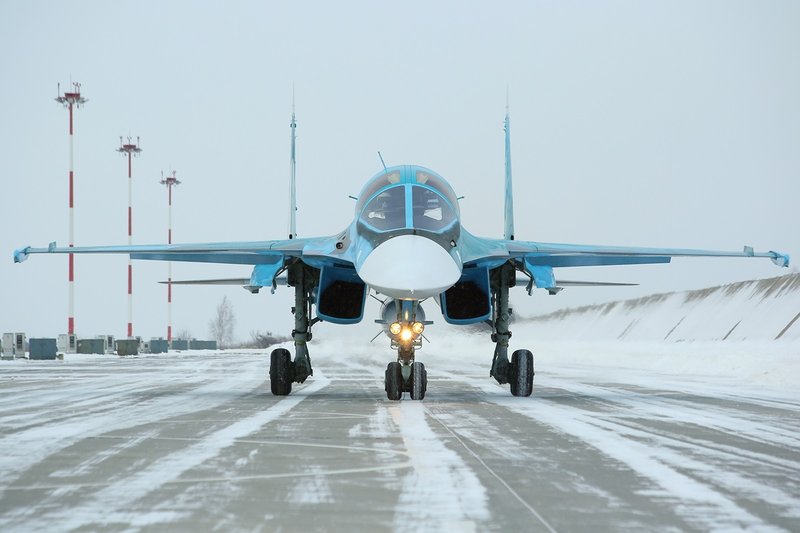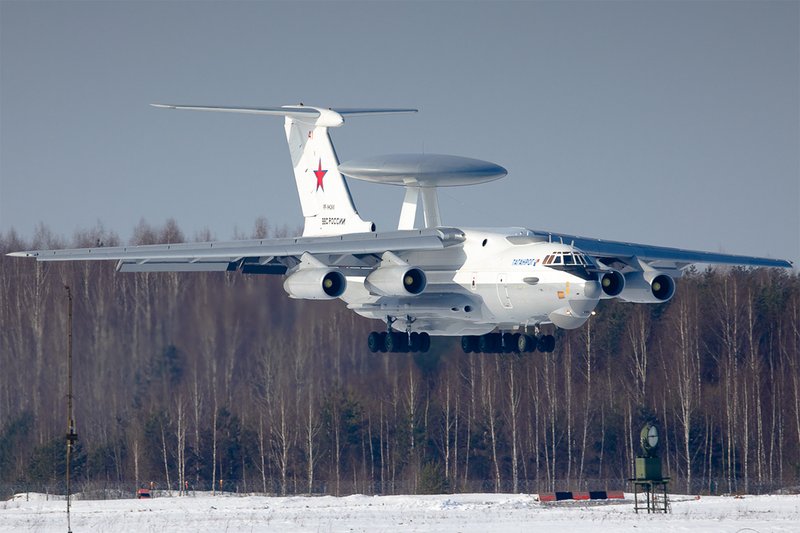Can Russian industry sustain a viable air arm?
While sanctions may not have crippled Russia’s military-industrial complex as some predicted, its ability to produce modern combat aircraft at a rate that will sustain a sufficiently capable air arm is by no means certain.
The 28th month of the Russian-initiated war in Ukraine is no doubt a depressing hash-mark in many people’s calendars. One of the ongoing, third-party complaints has been the lack of Russian economic-military-industrial collapse... Continues below
Newsletter Sponsor:

Above: Russian losses to Ukrainian air defences of Su-34s that were still flying over home territory have been problematic, and current low production rates seem insufficient to make up the numbers. (Photo: Ministry of Defence of the Russian Federation)
This was certainly suggested, if not promised, by commentators in 2022. The logic was that while Russian oil was a powerful resource, alternatives existed for its customers. Sanctions cut critical exports and QED the country could not continue. But QED it did not.
This analytical error is a recurring one. Most countries can survive a short- or medium-term exclusion from traditional markets and trading partners. Prolonged European war in the early 20th century was considered impossible owing to the interconnected nature of economies. The more time that would pass, the faster the positive feedback loop and hence the quicker the collapse.
Putin’s Russia has clearly not followed this trajectory, but conscripting prisoners as infantry to support obsolete tanks is not the sign of an economically healthy military or country.

The weight of the conflict has fallen on lower-level ground forces (one area in which Russia is well resourced) but by contrast its air arms are a more complex organ where dependence on low-technology suppliers and the limitations of domestic industry do have significant effects, and here sanctions are a factor.
Russia’s air arms are by no means dead, but whether they can be sustained is a different question. It has long been a complaint of high-technology operators that modern weapons are simply too complex and without a depth of support and spares are liable to fail, with serious consequences. This is uncomfortable for F-35 operators, but it is even worse for the Russian air force and naval aviation. Perhaps only Saab is feeling smug…
Russian losses have certainly been disastrous, both in quantity and quality. Su-34 strike aircraft launching weapons from over their own territory simply should not be destroyed by Ukrainian air defences, and the fact this this occurs regularly is a significant problem.
Even more worrying is the steady attrition of high-value assets such as the A-50 AEW aircraft, again by Ukrainian ground-based air defence. These were originally in short supply and after two years of war it is even less likely that more can be sourced easily.
High-end electronic components, something for which Russia has never been famous, are a particular bottleneck and harder to find than airframes or engines. Before 2022, there was a healthy dual-use trade in computer parts destined for industry, energy and the military. On the surface, this has ended, but suspicions continue that the blockade is far from watertight.
Is the presumption that a longer war equals reduced aircraft and subsystem production actually true? The general but caveated answer is yes. This year has seen deliveries of new and repaired Su-34s and Su-35s, but these are likely capped at less than ten per month, possibly far lower. There is also the question of sufficient spares, without which both new and old aircraft will suffer extremely low availability.
Concurrent with this have been efforts to improve output of multi-role civil aircraft such as the MC-21, although these have been at best mixed. Here, the large number of Western airliners held in the country has mitigated this domestic deficit in second-line transport capability.
Exquisite items such as the A-50 are more problematic. The airframe itself is very old and by comparison with the newer Sukhois was not much developed. The old joke that the Russian military never throws anything away has undoubtedly been of assistance in keeping and perhaps resurrecting older designs, but this limits the capabilities they can provide.
There simply is no replacement for a modern and well-supported AEW fleet. The arrival of Saab 340 aircraft in this role for Ukraine and Poland stands in striking contrast.
The question, then, is how Russia has kept its air arms operational and whether this sustainable for much longer. As with the retention of Airbus and Boeing airliners referenced above, there are ways around problems and sanctions.
The most obvious one is simply sourcing foreign parts and technologies through third parties. China, India and Turkey have been suspected of participation but the entire Central Asian region is an obvious route for low-key traffic.

Above: Replacing the A-50 AEW aircraft destroyed in combat presents challenges, especially as the international supply chain for complex radar components has been constrained if not stopped by sanctions. (Photo: Ministry of Defence of the Russian Federation)
A high volume of elements for modern radars are (or can be) forged from high-end civil computer technology. It is impossible to track all AMD or similar products exported globally and doubtless many may have landed in Russia for use by Irkut and its supply chain. Nevertheless, such tangled paths constrain manufacture and although in one respect their existence represents a failure, sanctions have put limits on systems and weapons output.
One area where the impact may be more direct is new technology. The concurrence of reduced supply and a heavy draw on available Russian resources has undoubtedly hurt the Su-57 and Su-75 programmes. Since these would have limited short-term impact on the conflict, they are a comparative luxury that Putin’s forces will be forced to delay.
The same is likely true of next-generation sensors, systems and weapons, something arguably more serious within a continuously changing battlespace. There is a risk of a downward spiral as Russian aircraft are slow to evolve in the face of new Ukrainian or NATO-supplied weapons, increasing losses, which requires greater production to simply keep pace, and forces the continued use of older systems with lower survivability. Not in itself a strategic catastrophe, but another burden that Russian forces must bear.
That Russia has endless sources of troops and weapons is also a hackneyed trope. The history, on closer examination, is more complicated. The victorious Red Army of 1943-45 was heavily supplied by its Western partners. As well as some weapons, fuel, food, clothing and raw materials were provided in enormous quantities. So, too, were communications equipment and logistics vehicles.
Many core weapons certainly were Soviet-made, but when tools, materials and the trucks to tow them come from Detroit, building tens of thousands of combat aircraft was somewhat easier to accomplish.
This is clearly not a mirror to the current situation, and while some success in Russian defence production is troubling, it should not be overestimated. Artillery shells from North Korea and UAVs from Iran have taken the place of American aluminium, but none of Russia’s allies can make good the complex elements necessary for high-volume production of modern aircraft.
The sanctions are neither bulletproof nor by themselves catastrophic, but they are painful and helping to slow Russia’s ability to make good its high loss rate of valuable weapon systems.
Other articles in this newsletter:
Can Eurodrone prosper in a crowded market?
Replacing the MH-60 – why the US Navy is proceeding with caution
Don't want to miss out on future Decisive Edge content? Make sure you are signed up to our email newsletters.











